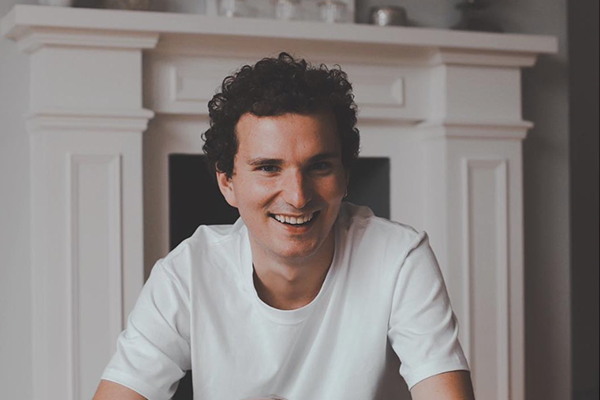Following James' blog last week, we caught up with him to find out about different breathing techniques are can try at home.
Breathwork is increasingly important at the moment in helping to make sure we are as grounded and calm as possible. Last week I shared a blog about the basics of Breathwork and how we should be breathing. Click here if you haven’t already given that a read.
Once we have learnt how to breathe, we can start learning how to use the breath to create a certain effects in the body and mind. The important thing to realise is that you can use the breath in lots of different ways – whether that is to calm you down, increase energy, increase focus, for deep emotional integration or even to improve sports performance.
There are many different breathing techniques for all of these, and I wanted to share with you ways to use the breath to boost immunity.
The two styles of Breathwork that I recommend are Pranayama, the yogic science of Breathwork, and the Wim Hof Method.
Pranayama
A 2005 study (Kochupillai et al, 2005) looked at the potential benefit of Pranayama and improvements in the immune system for cancer patients, and found that regular breathing practices could help boost immune cells that can combat cancer progressions. How could this be?
Pranayama techniques such as box breathing and cadence breathing can be used to downregulate the nervous system and move the body into the parasympathetic branch of your nervous system. That’s the state that your body needs to be in for you to feel relaxed, calm and most importantly for your body to heal.
When we are not in that parasympathetic state, it tends be because the body is in a state of stress. Chronic stress has shown to increase levels of cortisol in the body which opens the door to inflammation and supresses the immune response. Stress also decreases the body’s lymphocytes – the white blood cells that help fight off infection – and making you more at risk of catching viruses.
Try to keep your body in that parasympathetic state by using the breath to relax and calm you down, as well as optimising our body’s immune response to fight of infection.
Pranayama techniques
Box Breathing
- Start in a seated or lying position. Put one or both hands over your belly button so that you can feel the movement of your abdomen
- Inhale for four seconds through your nose and feel your hands rise or move outwards a few centimetres
- Hold for four seconds - do not clamp down and create back pressure
- Exhale for four seconds through your nose and feel your hands fall inwards a few centimetres. You do not have to empty your lungs all the way – just exhale very slowly until your lungs feel comfortably empty
- Hold for four seconds - do not clamp down and create back pressure
- That is one complete breath cycle. Then repeat this breath cycle for a minimum of 10 times – you can keep repeating it until you have reached your desired state of relaxation.
Cadence Breathing
- Start in a seated or lying position
- Put one or both hands over your belly button so that you can feel the movement of your abdomen
- Inhale for six seconds through your nose and feel your hands rise or move outwards a few centimetres
- Exhale for six seconds through your nose and feel your hands fall inwards a few centimetres. You do not have to empty your lungs all the way – just exhale very slowly until your lungs feel comfortably empty
- That is one complete breath cycle. Then repeat this breath cycle for a minimum of 10 times – you can keep repeating it until you have reached your desired state of relaxation
Stephen Elliott, a Biofeedback Practitioner who trademarked the term Coherent Breathing, has created a track which features distinct Tibetan Bells alternating every six seconds. It is available on Spotify under “Two Bells by Coherence”.
Wim Hof Method
The other style of Breathwork I recommend for increasing immunity is Wim Hof Method. Named after an amazing Dutch man called Wim Hof, this technique helps to lower inflammation in the body, turn the blood alkaline and also heavily downregulate the nervous system, therefore helping to deter infection and disease.
A study was done in 2014 (Kox et al., 2014) where a group of 24 volunteers were exposed to a toxin that causes flu-like symptoms. Twelve of the volunteers had spent time with Wim Hof practicing this specific breathing technique, as well as getting in ice baths and meditating. Those who underwent training with Wim Hof reported fewer flu-like symptoms than those who did not.
This is a profound and perfect example of the breath strengthening the body’s immune response. Wim runs courses online that one can practice, but his technique is as follows:
- Start in a seated or lying position. Put one or both hands over your belly button so that you can feel the movement of your abdomen
- Take 30 quick, deep breaths, inhaling and exhaling through your mouth
- Take a deep breath out and hold until you need to breathe in
- Inhale again, as deep as you can, and hold it for 10 second
- Repeat twice more
So, Breathwork is the simplest, yet most powerful tool available to us, any place, any time and is completely free. I always say that if pharmaceutical companies could patent and sell the benefits of the breath, they would be making a fortune from it. So please - use it, use it, use it. I am currently running online Digme classes, and would love for you to join or reach out if you would like to learn more.
Look after yourselves and keep breathing.
James x
Bibliography
Kochupillai, V., Kumar. P., Singh, D., (2005) ‘Effects of Rhythmic Breathing on Immune Functions and Tobacco Addiction’, Natural Products and Molecular Therapy: 242 - 252
Kox, M., van Eijk, L., Zwaag, J., (2014) ‘Voluntary Activation of the Sympathetic Nervous System and Attenuation of the Innate Immune Response in Humans’, Proceedings of the National Academy of Sciences of the United States of America: 7379 – 7384.





COMMENTS (0)
Be the first to comment!
Please login to comment